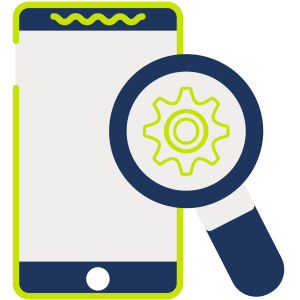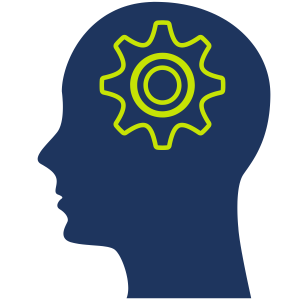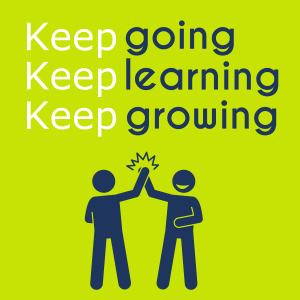
Focus Area 6: Behavioral Intervention
Summary
Wow, that was a lot to learn! Make no mistake about it, as a youth worker you will deal with behaviors that are troubling and difficult, sometimes even scary. Knowing how to handle these situations ahead of time, you’ll become more knowledgeable, skilled, and confident in using dysregulated behavior to teach effective, lifelong self-regulation habits. And as a result, you’ll build a more trusting relationship with the youth you serve. Pretty cool.
Everyone experiences emotions. Emotions impact and drive our behaviors. And our behaviors impact and drive our emotions. This applies to you as an adult in the same way it does to the youth you serve. The difference is that you, as an adult, have probably learned effective ways to manage your emotions so that you are more capable of choosing how you’ll respond and behave when strong emotions arise.
Young people need time and your help to learn how to do that self-regulation when strong emotions arise in them. It is a skill they can learn and it is a real life-changer for them. That’s the impact you can have.
Nobody is saying this is an easy task for you. Have you ever heard the expression, “Experience is the best teacher?” Well, you’re sure to experience youth in every zone of regulation, responding and reacting to every emotion. They need to have those experiences in order to learn. You need to be part of those experiences in order to learn how to teach them.
The challenge is to stay present for the lessons even when youth are at their worst behavior, fully dysregulated, and possibly even directing their anger squarely at you (or, at least that’s probably how you’ll feel in the moment). It is not at all easy to stay calm, cool, and collected when faced with these situations but you’ll get better and better at it over time. Be gentle. Keep taking action to turn the situation into positive growth for the youth you serve, as well as for yourself.
This module has given you information to better understand what drives youth behavior. You’ve read about some strategies and tools you can use to be more confident in your ability to use behavioral interventions effectively. Wrapped around it all is the need for you to really be a solid role model for youth; know your own emotional triggers and have strategies for keeping your own buttons from being pushed by dysregulated youth.
Finally, remember that behavioral intervention is a continuous learning process. You will never be perfect at it and youth will still become dysregulated. However, you will get very good at this skill if you are committed to personal and professional growth.

Explore the connection between emotions and behaviors:
- Emotions impact behaviors; difficulties arise when youth don’t make good choices about how to respond to strong emotional feelings
- Primary emotions are responses to what actually occurred, secondary emotions are emotional reactions to a primary emotion
- Secondary emotions tend to stack up, create a negative cycle that reinforces negative behavior, and cause dysregulation
Learn how to identify the five zones of regulation:
- BLUE Zone, GREEN Zone, YELLOW Zone, RED Zone, ORANGE Zone
- Being aware of your own zone of regulation in the moment is as important as recognizing the zone of regulation a youth is in
- Distinct stages of dysregulation often occur sequentially, from anxiety/worry to frustration to anger, to secondary reaction and then quieting. Early intervention, and matching your interventions to each stage, is key
Acquire intervention strategies to help youth avoid becoming dysregulated:
- Recall strategies such as early detection, understanding baseline behaviors, getting to know the youth you serve, and helping youth self-identify their zones of regulation
- Best practice is to know the “baseline” behavior of each youth
Learn how to help a dysregulated youth re-regulate their behavior:
- Recall techniques such as interrupting the process, allowing for time, and setting limits to help youth with regulation
- Best practice is listen intently, respond calmly, and do not argue!
Consider how your self-regulation plays a role in helping young people:
- Self-regulation is healthy coping
- Your ability to both model and teach self-regulation skills will positively impact how a young person experiences life and deals with all the ups and downs ahead of them

Nicely done. At this point you have a good understanding of how you can intervene with youth and help young people learn self-regulation skills.
Now it is time to reinforce your learning by passing an 8-question quiz. If you read the written material carefully and took time to absorb the information and to complete the exercises provided, you are well-prepared for the quiz. You need a score of at least 80% to pass. Good luck!

"Try to be a rainbow in someone's cloud." — Maya Angelou, American poet, memoirist, and civil rights activist
You are very bright! Your commitment to learning and growing shows how much you care. You're going to have challenging days ahead when young people will need your light and your love. What a gift you are to them. Want to expand your knowledge in this focus area? Click the link above and explore.
If you prefer to print this section of The Art & Science of Youth Work certificate course, click on the "Print Friendly" icon to select how you would like it to print. You can remove images and icons.
